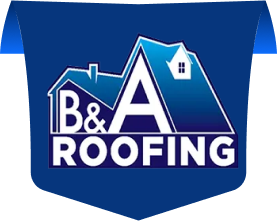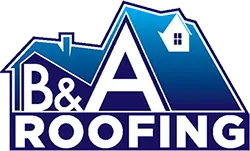When building or renovating a home, roof insulation plays a huge role in energy efficiency, indoor comfort, and the overall lifespan of your roof. The two main insulation methods — hot roofs and cold roofs — each offer advantages and disadvantages. Understanding how they work and their benefits can help you make a well-informed decision for your home.
Let’s get into this blog post and learn about the main differences between hot roof vs. cold roof insulation.
What Is Hot Roof Insulation?

Hot roof insulation is applied directly to the roof decking, sealing the attic within the home’s conditioned space. This design eliminates the need for ventilation within the attic itself, as the insulation helps retain heat and keeps temperatures stable.
However, proper installation is crucial as any gaps can trap moisture and lead to structural damage over time. Known for its high R-value, hot roof insulation provides excellent thermal resistance, making it one of the most energy-efficient roofing options.
Pros
- Better Insulation – Placed directly on the roof deck, reducing heat transfer and keeping indoor temperatures steady.
- More Usable Attic Space – Since insulation is above the rafters, the attic can be used for storage or living space.
- Energy Savings – Prevents heat loss, lowering heating and cooling costs over time.
- Faster Installation – Retrofitting is often quicker than traditional cold roof insulation.
Cons
- Higher Upfront Cost – Uses pricier materials like spray foam, increasing initial expenses.
- Fewer Insulation Options – Often limited to specific insulation types, unlike cold roofs.
- Moisture Risks – Poor sealing can trap moisture, leading to mold and structural damage.
- Increased Roof Height – Extra layers can slightly raise the overall building height.
- More Complex Design – Requires careful planning for insulation and moisture control.
What Is Cold Roof Insulation?

In contrast, cold roof insulation is placed between the rafters, leaving an air gap above for ventilation. This setup helps keep the roof deck cooler and minimizes condensation risks. It’s easier to install during construction and doesn’t affect ceiling height. However, it can lead to thermal bridging, where uninsulated rafters let outside air seep into living spaces, raising energy costs. While cold roofs are more affordable upfront, they may need extra insulation to improve energy efficiency.
Pros
- Lower Initial Cost – Uses affordable materials like fiberglass, making it budget-friendly.
- Better Moisture Control – Ventilation helps reduce condensation and prolongs roof life.
- Longer Roof Lifespan – Proper airflow prevents damage from trapped moisture.
- Stable Indoor Temperature – Keeps interiors cooler in warm climates.
- Easier to Find Contractors – Many roofers are experienced with cold roof systems.
Cons
- Less Energy Efficient – More heat loss can lead to higher energy bills.
- Limited Attic Space – Insulation between rafters reduces usable attic area.
- More Complicated Installation – Requires vents and baffles, adding to labor time.
- Thermal Bridging Issues – Some areas may remain uninsulated, letting in cold air.
- More Maintenance – Needs regular inspections to ensure proper ventilation.
Key Differences Between Hot Roof and Cold Roof Insulation
To compare hot roof vs. cold roof insulation, let’s break down their major differences:
1. Insulation Location
A hot roof keeps the entire roof structure warm by placing insulation directly above the roof deck. This design prevents outside air from entering the home, improving thermal efficiency and lowering energy bills. In contrast, a cold roof positions insulation between the rafters, leaving an uninsulated space above. This gap might allow outdoor air to seep in, leading to heat loss and making the home less efficient in retaining warmth.
2. Energy Efficiency
Since a hot roof insulates the entire roof structure, it significantly reduces heat loss, lowering reliance on heating systems and cutting energy bills. The continuous insulation helps maintain a stable indoor temperature, making it a more energy-efficient option. A cold roof, while still effective with proper insulation and ventilation, tends to be less efficient due to the uninsulated space, which forces heating systems to work harder to maintain comfort.
3. Condensation Risks
One key advantage of a hot roof is its ability to reduce condensation. By insulating above the roof deck, it prevents moisture-laden air from reaching cold surfaces, minimizing the risk of mold and structural damage. On the other hand, a cold roof creates an uninsulated void where moisture can accumulate, increasing the chance of mold growth and wood rot. Proper ventilation is necessary to prevent these issues in a cold roof system.
4. Installation Complexity
A hot roof is often easier to install since insulation is placed directly over the existing structure. However, it may require additional materials, such as vapor barriers, to manage moisture effectively. A cold roof can be more complex to install, especially in retrofits, as insulation must be fitted between rafters while ensuring adequate airflow. This makes the process more labor-intensive and time-consuming.
5. Cost Considerations
While a hot roof has a higher upfront cost due to the thicker insulation and vapor barriers required, it can lead to long-term savings by lowering cooling expenses. In contrast, a cold roof is generally cheaper to install but may result in higher energy bills over time, along with potential maintenance costs related to moisture issues.
6. Ventilation Requirements
A hot roof requires little ventilation since the insulation sits directly on the roof deck, reducing the risk of moisture buildup. However, proper sealing and vapor barriers are crucial to keep insulation dry. A cold roof, on the other hand, relies on a well-designed ventilation system to allow airflow in the uninsulated space.
7. Climate Suitability
A hot roof works well in regions with extreme temperature variations, keeping interiors warm in winter while also reducing cooling loads in summer. In contrast, a cold roof is better suited for colder climates, where ventilation helps manage snow accumulation and prevents ice dams from forming.
8. Aesthetic Considerations
Hot roofs offer architectural flexibility, as insulation is hidden beneath the roofing material, maintaining a clean, polished home interior. A cold roof, however, may expose rafters or trusses, impacting the overall aesthetic. While this may not suit modern designs, it can enhance traditional or rustic styles, where visible beams add to the building’s character.
Also Read: 4 Types of Insulation for Metal Roofs: A Comparative Guide
Considerations for Choosing Between Hot and Cold Roofs
To help you decide between hot and cold roof insulation, here are a few key factors to keep in mind:
1. Climate Factors
As mentioned above, a cold roof is ideal for colder climates, as it helps prevent ice dams in winter while keeping the home cooler in summer. However, if temperatures rarely drop below 20 degrees Fahrenheit, a hot roof may be the better option, as it retains heat more effectively and reduces energy loss.
2. Building Design
Hot roofs work well for both new construction and retrofits, offering flexibility in design. Cold roofs, however, can be harder to repair since the roof sheathing is more exposed and not as well protected by roofing layers.
3. Budget Constraints
Cold roofs are more affordable upfront, making them a good choice for budget-conscious homeowners. However, hot roofs offer better insulation, leading to long-term energy savings that can offset the higher initial cost over time.
Improve Your Roof’s Efficiency with B & A Roofing and Gutters!
Understanding hot and cold roofs helps you make the best choice for your home. Each option has its pros and cons, depending on your climate, budget, and needs. By weighing these factors and consulting a roofing expert, you can have a durable, well-insulated, and energy-efficient roof.
With B & A Roofing and Gutters, you get expert roofing services that improve the comfort of your home. Whether you need a new roof, repairs, or better insulation to regulate temperature, our team delivers top-quality roofing services. We ensure your home stays protected year-round with reliable materials and expert solutions. To get the best for your roof, contact us today at (601) 520-3183!


